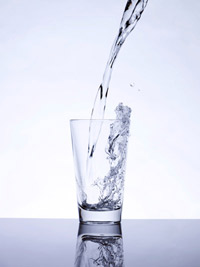Login form
Science
gravity

There are two forces in nature that we experience every day: gravity and magnetism. You may have magnets on your refrigerator, and you know that a magnet will attract a refrigerator with a certain amount of force. The force depends on the strength of the magnet and the distance between the magnet and the metal. You also know that magnets have two poles -- north and south. Either pole will attract iron or steel equally well, north will attract south, and like poles will repel one another.
Gravity is the other common force.
Fluoride
 Is fluoride considered a poison in most European countries?
Is fluoride considered a poison in most European countries?
The practice of water fluoridation has been controversial from day one. It was first introduced in the U.S. in the 1940s, when Grand Rapids, Mich. added fluoride to its public water supply in the wake of wide evidence that fluoride helps strengthen teeth and supports oral health.
Many of us use toothpaste with fluoride in it for this purpose, and organizations like the American Dental Association and the International Dental Federation believe that drinking water with added fluoride can help our teeth in much the same way that toothpaste does. After the World Health Organization's 1969 endorsement, countries throughout the world began fluoridating their drinking water.
Stars and constellations

One of the pleasures of camping is looking up at night into the heavens. Away from the lights of the city, you can see thousands of stars. At first, the night sky may seem to be a random scattering of brilliant points of light. Look more carefully, though, and you will notice that some stars are brighter than others. Night after night they appear in the sky at almost the same place. There is an order to their location. Learn about that order, and you will have a powerful skill for finding directions at night.
For thousands of years, people have grouped stars into pictured called constellations. The word comes from con meaning "together", and stella, meaning "star". This name started to times when Greek and Roman shepherds spent their nights under the open sky.
Bathing To Fight Illnesses

Tips on some therapeutic baths available nowadays
Seawater can help treat many cutaneous diseases and joint illnesses without causing any side effects, so sea baths, or thalassotherapy, are very beneficial to our health. When sea bathing, the provitamin of vitamin D under the skin is synthesized by the sunlight, which beautifies the skin and strengthens the bone. In addition, swimming is among one of the best physical exercises. The effect of sea waves on the body is like that of a massage session.
Vitamin

A vitamin is an organic compound required as a nutrient in tiny amounts by an organism. A compound is called a vitamin when it cannot be synthesized in sufficient quantities by an organism, and must be obtained from the diet. Thus, the term is conditional both on the circumstances and the particular organism.
Vitamin A:
Vitamin A is a group of compounds that play an important role in vision, bone growth, reproduction, cell division, and cell differentiation Vitamin A helps regulate the immune system, which helps prevent or fight off infections by making white blood cells that destroy harmful bacteria and viruses Vitamin A also may help lymphocytes fight infections more effectively.
